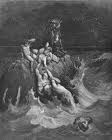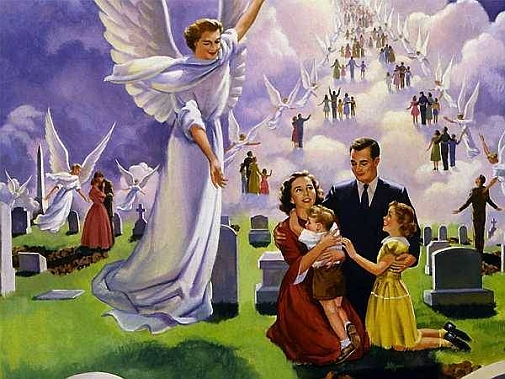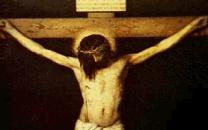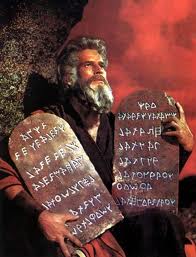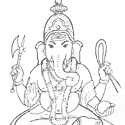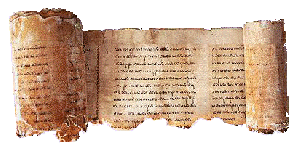|
The Kashmir Adventures
of Prince Meghaváhana Son
of Shiva!
6th Lecture in
the “Tolerant God” Series
(As Researched and Experienced by Dr.
Bob Holt, MD)
The proposition that there was a king in the tiny Himalayan
kingdom of Kashmir in the first century AD named Meghaváhana
will raise no eyebrows and create no controversy in either modern
Kashmir or India, because this is written in Kings of Kashmira. This
book is the most respected history of this area and this time, and
it’s author, Kahlana
Pandita, is as respected a historical researcher as was Flavius
Josephus to Romans and Jews of the first and second centuries of the
Christian Era. “Pandita”
is a term of respect and honor in Indian society, roughly equivalent to
“pundit”, or “wise man”. Until
Suzanne Olsson sent me a copy of Kahlana’s book, I had no idea that
Jesus Christ reigned first in Kashmir starting his reign in 25 AD under
the name Prince Meghaváhana than anyone else in the Western World.
But after researching this subject for six years, putting up
several websites with this as the major proposition, and writing a
number of books for sale on the Internet as either downloads or hard
copy printed books I am here prepared to defend this position.
The idea that a little known king in an obscure little nation now
contested territory on the border between India, Pakistan, and Tibet was
known as the beloved and protected “Son” of the great Indian God
Shiva is no surprise. Most
or perhaps all of the early kings of Kashmir made this claim.
Lord
Shiva, the chief Hindu god of Kashmir, is thought to have spent his
earliest years in the ice cave in the Himalaya mountains of Kashmir. His earliest sweetheart was Parvati. Known as the “Lady of the Mountain”, in one of many
stories, she wooed him by being as dedicated to meditation and fasting
as he was on one of his aesthetic “binges”.
Once he got over this religious “binge” they had a number of
children, also gods. Thousands
of Indians go on pilgrimages to Shiva’s ice cave in Kashmir every
year.
The idea that this obscure Kashmiri king named Meghaváhana
was also Jesus Christ is a novel one.
One that I am here prepared to defend not only from the history
book of Kashmir named Kings of Kashmira, but also by a recent archeological find in
Phalgam, a suburb of Srinigar, capital of Kashmir. And
a well-known stone sculpture found at Taxila, in Pakistan.
And by Buddhist paintings found on the walls of the famed Ajunta
caves near Auringabad in India.
To me, as an expert in “Gospel Pesher” and other Bible
Codes, it is very interesting that this information is also encoded in
a hidden form in the Bible, mostly in the Gospel of Matthew, and in
Revelation chapter 19. I’ll
begin by quoting from my book Karmic
Christ, starting on page //.
I’m doing this first, and resorting to the actual text found in Kings
of Kashmira last because I have become proficient in “Bible
Codes” since 1992, and more of my audience here in the United States may
be willing to admit that Jesus Christ was an Essene, and that there are
indeed hidden “Codes”, and puzzles to be solved in the Gospels, than
to believe that Jesus lived in India.
A Triple Meaning for the Phrase “Tyre and Sidon”
“This is deeply encoded information and is only available to
those of us in the Western World at the ‘End of Days’ who already know
that the Hebrew kings David and Solomon had a lucrative trade with
Pakistan and India in collaboration with King Hiram of Tyre beginning
about 1000 BC and extending into and after the first century AD.
Matthew knew about this trade, as did many or most of his readers
or listeners who read and listened to his gospel, the Gospel
of Matthew, published at the Qumran scriptorium, the major Hebrew
book-publishing establishment of the mid-first-century
AD. As
High Priest at Herod’s Temple from 42-43 AD Matthew the Publican [Hebrew
High Priest] had the money and the power to publish such a book, and Dr.
Barbara Thiering PhD, the world renowned Gospel Pesherist who herself
wrote and published Jesus
and the Riddle of the Dead Sea Scrolls in 1992 was able to
pinpoint the years of Matthew’s reign as High Priest to 42-43 AD by
using Josephus’ histories of the Jews, and contemporary information
derived from “Gospel Pesher”.
In those days, it as
the business of the High Priest to know about all the financial dealings
in Samaria, Galilee, and Judea, because the income of Herod’s temple
depended on this knowledge, and the taxes to be paid were adjusted
accordingly. And the
bribes to be paid to Pontius Pilate and the other Roman governors also
calculated from this income. None
of the shiploads of gold, spices, especially pepper, and silk fabric, and
exotic items like ivory, jewels, monkeys and peacocks beginning their
Mediterranean voyage at Joppa to go from there to Tyre, Sidon, and
eventually Rome and beyond escaped Matthew Annas’ attention, and all
this business showed up on the financial ledgers that his scribes kept in
some well-guarded room in or near Herod’s great temple.
The Essene Pesher Meaning of “Tyre and Sidon”
All this information is implied as a third layer of information in
the text of Matthew 15:21 “Then
Jesus went thence, and departed into the coasts of Tyre and Sidon.”
The second layer of information was that discovered by Dr.
Barbara Thiering PhD or one of her pupils or fellow researchers.
And published in her book Jesus
and the Riddle of the Dead Sea Scrolls.
This second layer is about certain Essenes, and what they
did in connection with the real first-century AD Tyre and Sidon.
The third layer takes us to a completely different location,
connected with Tyre and Sidon only by the knowledge of the relationship
between Kings David and Solomon and King Hiram of Tyre and the trade with
India, Pakistan, and Kashmir still going on as these words were being
written by Matthew. That’s
what makes it hidden “coded” information.
This connection is not obvious.
It requires some thought and investigation.
When Jesus “went thence” he left his former location, Galilee
or Judea, and we are supposed to envision him in far-away India, Pakistan,
and Kashmir. Identified
by the symbolic connection with the India trade brought to mind by the
mention of “Tyre and Sidon”, the country of King Hiram of 10 centuries
earlier.
“A Woman of Canaan”
Matthew 15:22 “And, behold,
a woman of Canaan came out of the same coasts, and cried unto him, saying,
Have mercy on me, O Lord, thou son of David; my daughter is grievously
vexed with a devil.” This
is also a three-layered verse, as was the verse before it, and this is our
warning to look more closely at its various meanings.
The first layer that everyone sees, even ministers and policemen,
is that Jesus is being asked to cast out one
more devil. Something
he does frequently throughout all the gospels.
But in this case it’s a devil-possessed daughter of a seemingly
foreign woman, not a Jewish woman.
That she was a woman of Canaan suggests she was a Samaritan,
considered to be almost foreigners by the Judeans, and more likely to be
“possessed by devils” than they, the Judeans, were.
We are allowed to believe that this was really the woman’s
daughter, which is not true in the second layer of meaning, as we shall
see.
The second layer of meaning, as revealed by Thiering in her book,
relies on the knowledge of the identity of certain Essene characters
around whose real lives these stories are constructed.
Time, dates, and locations are revealed by certain Greek words used
atypically, by sequence, and by relationships between certain Jewish and
Essene feasts, which almost always were on different dates in any given
year. Often the identity must be deduced by descriptive terms
for a person or persons. In
this case, we must realize that “Canaan” = Samaria, and that this
woman is connected in some way with the major Samaritan at Qumran, Simon
Magus, the celebrated Gnostic teacher.
His “woman” was Helena, a prostitute from Tyre, who he had
reformed, and who now lived with him at Ain Feshkha, only three kilometers
from the Qumran monastery. This
bit of information allows us to move from Tyre and Sidon on the coast of
the Mediterranean to Ain Feshkha on the coast of the Dead Sea, and Jesus
in this story is really having a discussion with “Martha” the sister
of Mary and Lazarus. Lazarus
was just another name for Simon Magus in the gospels of John and Luke.
But not in Matthew, where he is called Zebedee, Simon the Leper,
and other names we need not get into here.
“Possessed by a Devil”
“Possessed by a devil” brings to mind Mary
Magdalene, the major woman in the gospels with a reputation for devil
possession. Indeed seven
devils is the usual number of devils attributed to her. So now we have, in this second level, identified
the woman making the request of Jesus as Martha.
And she is making the request for her sister Mary, also known as
Mary Magdalene, which should not be a surprise, since everyone knows that
Mary Magdalene was devil-possessed at one time.
The point to be noticed here is that Martha is claiming Mary as her
daughter, not her sister. But
daughter can be used as a disciple, student, or follower, so the implied
relationship is that Martha is the teacher, a person of authority, and
Mary was her student. Factor
in Simon Magus, as the greatest Gnostic of those days, and Lazarus the
“brother” of these two women, and we can be assured they were all
three Gnostic Essenes. To
more orthodox Essenes and the later Christians, all Gnostics are
devil-possessed, another layer of meaning in all this.
King Hiram of Tyre
We will not here pursue level two further but now consider level
three. In level three, which
I called in my book “Beyond
Gospel Pesher”, we are transported to some place in India, Pakistan,
or Kashmir by Matthew 15:21 by the reference to Tyre and Sidon, the home
of King Hiram of 1000 years previously.
And the place Hiram’s sailors left with Jewish sailors in the
days of Kings David and Solomon to go first to Elat on the Gulf of Aquaba,
from thence across the Arabian Sea to India to pick up rich cargoes.
Then when the winds shifted to the opposite direction, back to Elat.
These cargoes were transported across Israel to Joppa or Tyre,
loaded on other boats owned by Hiram and Solomon.
And finally to Greece and Rome.
So in Matthew 15:21, on the third level, we are dealing with
completely different characters, except for Jesus.
Now confronted by a mother and daughter somewhere in India,
Pakistan, or Kashmir. And
in this level Jesus is indeed being confronted by a mother requesting help
in the problem of her biological daughter.
Not her disciple or follower or student, but her real daughter.
Whose name we can discover by comparing a major story in one of the
books attributed to the Apostle Thomas, the missionary to India, and the
major ancient history book of Kashmir, titled The
Kings of Kashmira, by a respected Kashmiri author and historian
named Kahlana.
The Taxila Wedding Attended by Thomas
In both these stories a wedding
is the setting for the stories. And
Jesus is somehow involved. Thomas
attends this wedding in his version, and jokes about the “bridal
chamber”. And in Kahlana’s version, a young prince, the
descendent of “Yudisthira the Blind” is invited to attend a wedding.
The name of this young prince is Meghaváhana,
and with the assistance of a fellow researcher named Suzanne Olsson, I
have demonstrated in other books and websites that Meghaváhana is none
other than Jesus Christ of the Christian Gospels.
What really ties these two stories together besides the wedding is
the city the wedding is located, Taxila [in Pakistan], and King Gudaphor
or Gundaphorus. However,
in Kings of Kashmira, the
King’s name is Godpaditya.. And
although it takes a little more effort to find out the name of the
“devil possessed daughter”, the king’s daughter in the wedding is a
Vishnuvite.
To the Jews, a Hindu princess who worshipped Lord Vishnu would
indeed be called “devil possessed”.
Indeed, to the Jews, all Hindu gods are really devils. And the major
Devil is Lord Shiva, whose symbolic penis is worshipped by the majority of
Indian women. A
little more detective work, and we have the daughter’s name,
Amritaprabha.
Amritaprabha’s problem was not that she was a Vishnuvite
[devil-possessed], but that she was unmarried.
And King Gundaphor’s problem was that he wanted to control
Kashmir as well as his own country.
And Sandhimati, the current king of Kashmir’s problem was that
his countrymen were forcing him to retire. And Jesus fit into this entire,
rather complicated picture as Sandhimati’s secret son.
So Jesus [Meghaváhana] was invited to a wedding
as the intended bridegroom for Amritaprabha.
This seems improbable, and not much more than guesswork on my part,
except for one very important fact available on the second level meaning
of this whole episode available since Doctor Barbara Thiering
published her book in 1992.
The real meaning of this whole episode is that Jesus was responding
to Martha’s request for him to resume his marriage with Mary Magdalene
[the devil-lady]. So
the third-level meaning is totally consistent with this second-level
meaning. Only now it is
the Queen of Taxila that is requesting Jesus [Meghaváhana] to marry her
daughter, Amritaprabha.
On all three levels, the usual surface reading, the “Gospel
Pesher” meaning, and the “Beyond Gospel Pesher” meaning, Jesus said
yes! But not right
away.
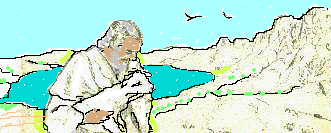
The Lost Sheep of the House of Israel
Matthew 15: 23 “But he
answered her not a word. And
his disciples came and besought him, Send her away; for she crieth after
us. 24 But he answered
and said, I am not sent but unto the lost
sheep of the house of Israel.”
Here
is where the major confirmation of the third level [Beyond
Gospel Pesher] becomes certain.
For the people of Kashmir have known for centuries that they are
the descendants of the Ten Tribes
who were dragged off by the Assyrians and resettled in Persia in the
seventh to ninth year of the reign of King Hoshea son of Elah of Israel.
[around 720 BC] [II Kings chapter 18]
II Kings 18: 11 “And the
king of Assyria did carry away Israel unto Assyria, and put them in Halah
and in Habor by the river of Gozan, and in the cities of the Medes.”
Even many Jewish historians and researchers now are willing to
admit this is true, since so many family names and place names in Kashmir
match those in that part of Israel vacated by the lost 10 tribes.
The “Lost Sheep of the House of Israel”.
Jesus on the third level is
telling his disciples that he is from Kashmir,
And why he was living in Kashmir.
Because that’s where the “Lost Sheep” lived.
To whom he was “sent” by his Heavenly Father.
Matthew 15:25 “Then came
she [the Queen of Taxila] and worshipped him, saying, Lord, help me [by
marrying my daughter, Amritaprabha]. 26 But he answered and said, It is
not meet to take the children’s bread [Jewish and Essene theology], and
cast it to the dogs. [“dogs” were Goyim, non-Jews, pagans,
idol-worshippers]. 27 And she
[the Queen] said, Truth, Lord, yet the dogs eat of the crumbs which fall
from their masters’ table.”
Meaning: You can teach my people and those “lost tribes” in
Kashmir anything you feel it is important for them to know, so long as you
marry my daughter.
Matthew 15:28 “Then Jesus
answered and said unto her. O
woman, great is thy faith; be it unto thee even as thou wilt.
And her daughter was made whole from that very hour.”
“Pesher Meaning”: Jesus
married Amritaprabha, Hindu Princess of Taxila!
On the first level of meaning, one more devil-possessed person
was healed, this time one from Tyre or Sidon.
On the second level of meaning, Jesus accepted Martha’s message
that Mary Magdalene [devil-woman] was willing to go back with him to
Kherbit Mazin, where the married Essenes lived together.
But on the third and most important level, Jesus married
Amritaprabha, a Pakistani princess, and thereby became, after a few days
or weeks, the King
of Kashmir. And
thereby gained complete access to “the lost sheep of the house of
Israel”.
Matthew’s
Description of Kashmir
The “Beyond Gospel Pesher” meaning of Matthew 15:29-31
depends entirely upon the third layer meaning of Matthew 15:21-28.
Here we have no clue to location as we did before by the mention of
Tyre and Sidon. Nor
do we have anyone called “dogs”. Nor anyone called
“devil-possessed”. The
only thing we have going for us is sequence.
If we were in Taxila before, and if Jesus went to Kashmir
immediately after his marriage to Amritaprahbha, then we can safely assume
that these next three verses refer to what Jesus did in Kashmir after he
became this country’s king.
Matthew 15:29 “Then Jesus
departed from thence, ---“ According to the book Kings of Kashmira, Jesus [as Prince Meghaváhana] left Taxila
soon after his marriage to the King’s daughter, and traveled to Kashmir
at the invitation of the government of that country.
“---and came nigh unto the
sea of Galilee, --“. Here
we must look at the map of Kashmir and discover that the only lake that
would qualify to be the local equivalent of the sea of Galilee is Lake Dal,
and we can place Jesus now in Srinagar, the capital of Kashmir both then
and now. And
incredibly, the local tradition is that Jesus Christ actually lived there
in Srinagar under the name Yuzu Asaph, known also by the Muslims both
there and throughout the world as Hazrat Issa [Saint Issa].
Matthew 15:29b “—and went
up into a mountain, and sat down there.”
Kashmir is in the Himalaya mountains, and speaking generally,
“a mountain” can be generalized as the Himalaya mountains, the
location of Kashmir. However, a more likely meaning is one specific
mountain on the shore of Lake Dal is referred to here.
The mountain on which the so-called Temple
of Solomon is located. It
would be strange indeed if Jesus did not, soon after his arrival in
Kashmir, climb the stairs to the temple attributed to his supposed
ancestor Solomon, and hold some type of ceremony.
In the words of this text, he “sat down there”.
Matthew 15:30 “And great
multitudes came unto him, having with them those that were lame, blind,
dumb, maimed, and many others, and cast them down at Jesus’ feet; and he
healed them.”
Here
we have a description not so much of the people of Kashmir, who were in
general more healthy, as mountaineers and farmers, than the people beyond
the borders of Kashmir in India. India
has always been over-populated, and it is safe to say was over-populated
in Jesus’ time. India
is well-known for its lame, blind, dumb and maimed people.
Many of them out there on the streets of every Indian city with
cups and hands outstretched for a few coins or some rice from passers-by.
How did Jesus address this wave of sickness?
The book Kings
of Kashmira tells us how.
First he saw to it that a law was passed forbidding using flesh
foods in Kashmir, and paying butchers and hunters a small stipend so they
could live without slaughtering animals. Until,
perhaps, they could be trained to be useful at some other occupation.
Then, after training all of Kashmir to eat a healthful diet, he did
something very unusual. He
got together a group of “soldiers”, possible priestly evangelists, who
traveled all over India, and even to Ceylon, promoting the same vegetarian
diet. We all know now, although people didn’t know it then,
that such a program was bound to reduce the number of the “lame, blind,
dumb, and maimed”.
Matthew 15:31 “Insomuch
that the multitude wondered, when they saw the dumb to speak, the maimed
to be whole, the lame to walk, and the blind to see; and they glorified
the God of Israel.”
Here we must also go back to the first and second layer of
meaning, and analyze what Matthew and his fellow Essenes have done to the
literal meanings of these words. The
“dumb” were those afraid to speak their minds.
Or unable to speak “the truth” about any subject, scientific or
ethical, because they had been brain-washed by their leaders.
Matthew? “In
vain do ye worship me, teaching for doctrines the commandments of
men…” Jesus
on the first level is a miracle-worker, curing literally “dumb”
people, and they were able to speak.
On the second level, the “Gospel Pesher” meaning, Jesus taught
these supposedly “dumb” people new doctrines, and a more liberal
treatment of Gentiles and women.
On the first level, when Jesus the miracle-worker found a maimed
person, he was able by the power of God to grow out a new hand or foot so
the person could use it again.
On the second level, “Gospel Pesher”, Jesus’ more liberal
ideas allowed his Essene friends to do things they could not do before.
On the third level in India and Kashmir, it is the animals that are
being maimed by the hunters and butchers, and Jesus as King Meghaváhana,
makes it illegal to do this to animals.
In the text Jesus makes the lame to walk.
Literally on level one, symbolically on level two, and both
literally and symbolically in India, Pakistan, and Kashmir on level three.
With an army of health evangelists, the story is that Meghaváhana’s
army walked all over India promoting vegetarianism, and even “walked on
the water” to reach Ceylon with the same message.
Kings of Kashmira, page 36. “—the renowned Meghaváhana, whom they crowned king; and who
afterwards proved to be a good and kind-hearted sovereign; and the
expectations that were entertained of him were fully realized.
His tenderness for animal life was even greater than that of a
Buddhist high priest. He
forbade the slaughter of animals in his kingdom, and as compensation to
the hunters who lived by killing animals, he paid them money----This
prince led an expedition to compel other kings to desist from killing
animals; and carried his arms to the sea, and even to Ceylon, making the
subdued kings promise not to kill animals.”
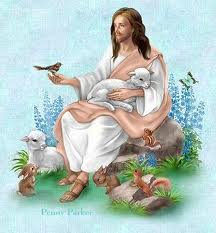
Note that in this picture, done by a modern "New Age" artist,
someone with Jesus' usual artistic appearance and dress has a lamb on his
lap and is surrounded by other animals that we can assume he is
protecting. This is entirely consistent with Jesus the
vegetarian Essene who spent part of his time at Qumran, where only
vegetables, bread, and wine were consumed, and commuted to Kashmir in a
flying "Vimana" where he is pictured on the carved stone mural
exactly as he is pictured above but with the addition of a mother
sheep, a wolf, and a lion, -- and is dressed as a king carrying a
sword. Add the Meghavahana story from Kings of Kashmira and
the sword is explained -- Jesus as a militant supporter of Vegetarianism
even outside of Kashmir! (Not
a story either Suzanna Olsson, who loves her steaks, nor the sausage and
ham-loving Christians of the "Bible Belt" want to affirm
!)
Meghavahana – Jesus: Who Made the Blind See!
Jesus, in Matthew 15:31, made the blind to see.
He’s still doing that, and this book is part of this on-going
project. I have
not cured all of you of your “blindness”, but perhaps I have cured
some of you, temporarily at least.
However, partly on the second level, and more completely on the
third level, it was another “God”, not Yahweh [Jehovah] the “God of
Israel” that was being “glorified”, at least in Pakistan and
Kashmir, by both Jesus, and Sandhimati before him.
A god who was thought of in India as the protector of the animals,
and of the environment. That “God” was Lord
Shiva, and indeed Matthew had quite a little to say about him also.
Not particularly good things, but accurate enough to identify that
it was Lord Shiva, not Yahweh
– Jehovah that was being talked about.
Jews considered all Indian gods to be devils, but Shiva was that
distinctive “Devil” with an extra eye, his “Third Eye” in the
middle of his forehead. The
Essene name for such a “Devil” was Beelzebub.
Jesus and
Beelzebub: Lord Shiva
Lord Shiva, in
Indian art, is always surrounded by animals, because he is their
designated protector. He
is impervious to the poison of deadly Cobra snakes, and one or several
Cobras is usually pictured coiled around his neck like a necklace, or in
his hair. Shiva likes
large cats also, and is often shown sitting on a leopard skin.
Lord Shiva had no inclinations towards monogamy, and although
Parvati is generally thought of as his first and most important wife,
there were many others. Some
with a pleasant personality and several that were rather unpleasant,
although definitely female.
Even those of you that may be rather slow at catching
on will by now realize that Lord Shiva, in ideals and in
temperament, is thought of as perhaps the direct
opposite of Yahweh or Jehovah.
It should not surprise any of us that the Jews of Jesus’ day that
knew he, Jesus, was associated in some way with Lord Shiva would accuse
him of doing his miracles by the power of the Devil, or Satan.
Matthew documents one of these confrontations in Matthew chapter
12, three chapters before the other major source of “Jesus in Kashmir”
information in chapter15..
Matthew 12:24 “But when the Pharisees heard it, they said, This fellow does not cast
out devils [teach permissive, unorthodox theology], but by Beelzebub the
prince of the devils.” On the third level, this reveals that Jesus was indeed
a Shiva-worshipper, and that Lord Shiva was helping Jesus to perform all
his "miracles”. And
indeed, Jesus would not have been able to rapidly travel between Kashmir
and Judea, and disappear and reappear at will without Lord Shiva’s help. Lord
Shiva is here the equivalent of “Beelzebub.”
Matthew 12:25 “And
Jesus knew their thoughts, and said unto them, Every kingdom divided
against itself is brought to desolation; and every city or house divided
against itself shall not stand: 26 And if Satan cast out Satan, he is
divided against himself: how
shall then his kingdom stand?”
This argument
won’t work in Shiva theology, but it is quite effective in Western-style
thinking.
Matthew 12:27 “And
if I by Beelzebub cast out devils, by whom do your children cast them out?
Therefore they shall be your judges.
28 But if I cast out devils by the Spirit of God, then the kingdom
of God is come unto you.”
Here Jesus is inviting his listeners to contrast two
supposed “gods”, Jehovah and Lord Shiva.
To compare two theologies, each with a large number of supporters.
The children of those attacking Jesus here are supposedly
“casting out devils” also, but by whose power?
Here we must paraphrase “casting out devils” with its real
meaning, which is “convincing listeners that ours is the superior
theology”.
In the
case of the first century Jews, theirs was the theology of a
“Jealous God”, who claimed to be the sole God entitled to be
worshipped, and who demanded continuous animal sacrifices to forgive their
sins and grant them favored status above their neighboring nations.
Jesus, in the “Beyond Gospel Pesher” meaning of
this verse is saying. “You
may be mistaken. There are other gods and other theologies available.
Including that of Lord Shiva.
A tolerant god who does NOT claim to be the ONLY god, and who does
NOT desire animal sacrifices, and indeed forbids his devotees to sacrifice
animals, even to eat for food.
I have chosen to call this god “My Father”, and am teaching his
theology.
If this theology is correct, as I believe it to be, then the real
“Kingdom of Heaven” is now beginning for you.
Now Jesus scoffs at the idea that Yahweh [Jehovah]
has any real power to stop this incursion in His [Jehovah's] supposed
territory by both him [Jesus] and Lord Shiva.
Matthew 12:29 “Or else how can one [such as I and Lord Shiva] enter into a strong
man’s house [the supposedly all-powerful Jehovah], and spoil his goods
[preach a totally opposite theology], except he first bind the strong man?
[the image here is of Jehovah bound]
and then he [Jesus and Lord Shiva] will spoil his house.”
What
Jesus has said here is the equivalent of a war against the traditional
theology taught by the Jews, and indeed a statement of the powerlessness
of their religion.
Matthew 12:30 “He that is not with me is against me; and he that gathereth not
with me scattereth abroad.”
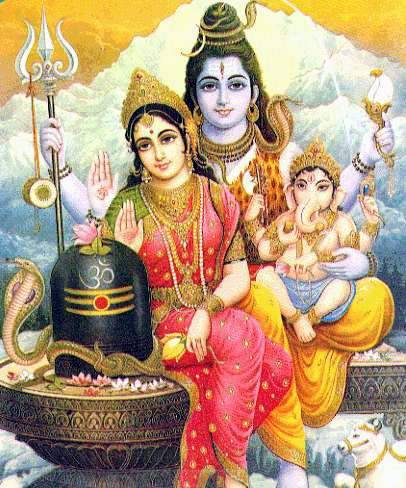
A
more flattering picture of Lord Shiva with his
wife,
the goddess Parvati, and his son Ganesh.
The
God of DEATH, destruction, tolerance, and
COMPASSION!
LORD
SHIVA
-Kashmir Traditions
|


